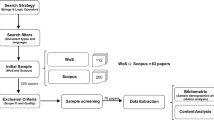Abstract
Software systems of today are often complex, making development costs difficult to estimate. This paper uses data from 50 projects performed at one of the largest banks in Sweden to identify factors that have an impact on software development cost. Correlation analysis of the relationship between factor states and project costs was assessed using ANOVA and regression analysis. Ten out of the original 31 factors turned out to have an impact on software development project cost at the Swedish bank including the: number of function points, involved risk, number of budget revisions, primary platform, project priority, commissioning body’s unit, commissioning body, number of project participants, project duration, and number of consultants. In order to be able to compare projects of different size and complexity, this study also considers the software development productivity defined as the amount of function points per working hour in a project. The study at the bank indicates that the productivity is affected by factors such as performance of estimation and prognosis efforts, project type, number of budget revisions, existence of testing conductor, presentation interface, and number of project participants. A discussion addressing how the productivity factors relate to cost estimation models and their factors is presented. Some of the factors found to have an impact on cost are already included in estimation models such as COCOMO II, TEAMATe, and SEER-SEM, for instance function points and software platform. Thus, this paper validates these well-known factors for cost estimation. However, several of the factors found in this study are not included in established models for software development cost estimation. Thus, this paper also provides indications for possible extensions of these models.
















Similar content being viewed by others
References
Albrect, A., & Gaffney, J. (1983). Software function, source lines of code, and development effort prediction: A software science validation. IEEE Transactions on Software Engineering, SE-9(6), 639–648.
Bailey, J., & Basili, V. R. (1981). A meta-model for software development resources expenditures. In 5th International conference on software engineering, pp. 107–116. IEEE Press.
Boehm, B. (1981). Software engineering Economics. Englewood Cliffs: Prentice Hall.
Boehm, B., Abts, C., & Chulani, S. (2000). Software development cost estimation approaches—a survey. Annals of Software Engineering, 10, 177–205.
Devnani-Chulani, S. (1999). Bayesian analyses of software cost and quality models. PhD thesis, University of Southern California.
Galorath Inc. (2010). System evaluation and estimation of resources—software estimation model (SEER-SEM). Available on http://www.gaseer.com, accessed February 5, 2010.
Institute, P. M. (2009). Project management body of knowledge (4th edn.). New York: PMI, Crosswind Project Management Inc.
Jensen, R. W. (1983). A comparison of the Jensen and COCOMO schedule and cost estimation models. In Proceedings of the international society of parametric analysts, pp 96–106.
Jones, C. (1997). Applied software measurement. McGraw Hill, New York.
Jorgensen, M., & Shepperd, M. (2007). A systematic review of software development cost estimation studies. Transactions on Software Engineering, 33(1), 33–53.
King, G. (1986). How not to lie with statistics: Avoiding common mistakes in quantitative political science. American Journal of Political Science, 30(3), 666–687.
Lagerström, R., Franke, U., Johnson, P., & Ullberg, J. (2009). A method for creating enterprise architecture metamodels—applied to systems modifiability analysis. In the International Journal of Computer Science and Applications, 6, 89–120.
Lagerström, R., Johnson, P., & Ekstedt, M. (2010a). Architecture analysis of enterprise systems modifiability—a metamodel for software change cost estimation. Software Quality Journal, 18(4), 437–468.
Lagerström, R., Johnson, P., & Höök, D. (2010b). Architecture analysis of enterprise systems modifiability—models, analysis and validation. In the Journal of Systems and Software (to appear), 83, 1387–1403.
Laird, L. & Brennan, C. (2006). Software measurement and estimation: A practical approach. New York: IEEE Computer Society/Wiley.
Marxwell, K. D., & Forselius, P. (2000). Benchmarking software development productivity. IEEE Software, 17(1), 80–88.
Matson, J. E., Barrett, B. E., & Mellichamp, J. M. (1994). Software development cost estimation using function points. IEEE Transactions on Software Engineering, 20(4), 275–287.
Maylor, H. (2003). Project management (3rd edn.). Edinburgh: Pearson education limited.
Molokken-Ostvold, K., & Haugen, N. C. (2007). Combining estimates with planning poker—an empirical study.
Montgomery, D. (2009). Design and analysis of experiments. New York: Wiley.
Morris, P. W. G. (1994). The management of projects. London: Thomas Telford.
Park, R. (1988). The central questions of the price software cost model. In 4th COCOMO Users’ Group Meeting.
Premraj, R. & Shepperd, M. (2005). An empirical analysis of software productivity over time. In 11th IEEE international software metrics symposium.
Putnam, L., & Myers, W. (1992). Measures for excellence. Prentice-Hall: Yordon press Computing Series.
Rubin, H. A. (1983). Macroestimation of software development parameters: The estimacs system. In SOFTFAIR conference development tools, techniques and alternatives, pp 4–16. IEEE Press.
Tausworthe, R. C. (1981). Deep space network software cost estimation model. Pasadena: Jet Propulsion Laboratory Publication, pp. 81–87.
The Common Software Measurement International Consortium (COSMIC). (2009). The COSMIC functional size measurement method, measurement manual. International standard version 3.0.1, COSMIC.
The Standish Group. (1995). Chaos Report. Technical report, The Standish Group International, Inc.
The Standish Group. (2003). What are your requirements? Technical report, The Standish Group International, Inc.
The Standish Group. (2009). Chaos summary 2009. Available on http://www.standishgroup.com, accessed February 5, 2010.
Trendowicz, A., Wickenkamp, A., Munch, J., Ishigai, Y., & Kawaguchi, T. (2008). An integrated approach for identifying relevant factors influencing software development productivity. Berlin: Springer.
Warner, R. (2008). Applied statistics. Thousand Oaks: SAGE Publications.
Author information
Authors and Affiliations
Corresponding author
Rights and permissions
About this article
Cite this article
Lagerström, R., von Würtemberg, L.M., Holm, H. et al. Identifying factors affecting software development cost and productivity. Software Qual J 20, 395–417 (2012). https://doi.org/10.1007/s11219-011-9137-8
Published:
Issue Date:
DOI: https://doi.org/10.1007/s11219-011-9137-8




